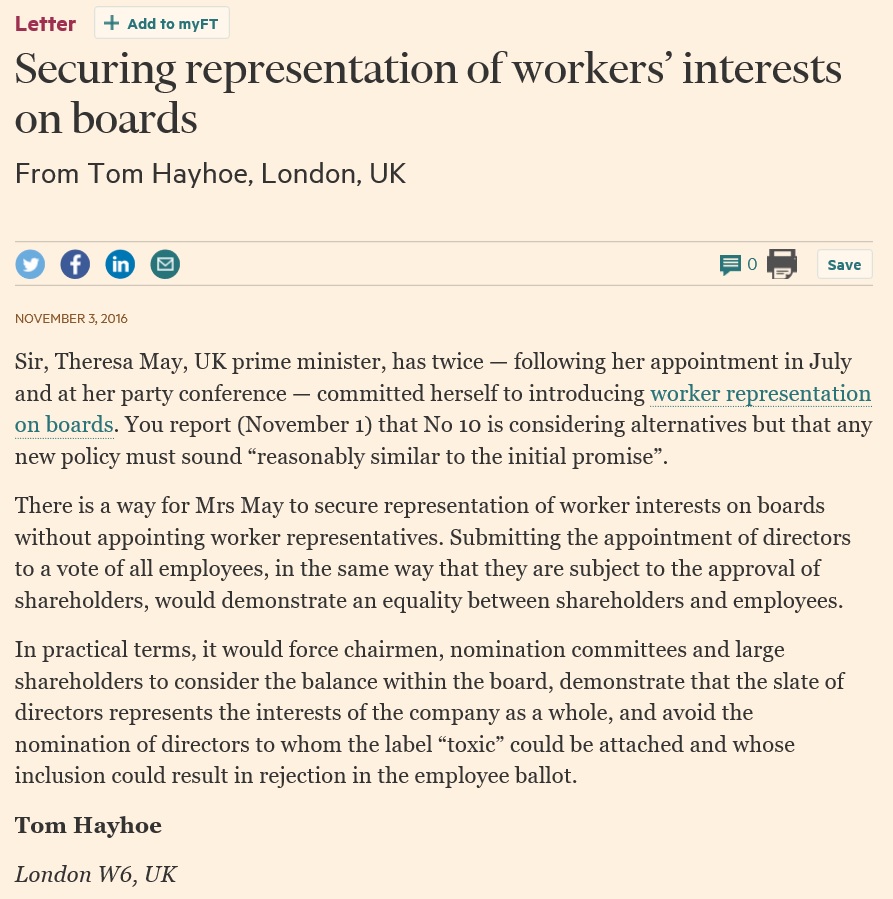Month: November 2016
Worker representation on boards: not exactly a U turn…..
….. but a sensible course adjustment to avoid the rocks.
The FT reports this morning that “Ministers are looking at ways to water down Theresa May’s pledge to put workers on company boards by exploring more practical options that do not run the risk of holding back day-to-day business operations”. This specific part of the report can hardly be fresh news, since doubts were expressed in many circles, not just in this blog, about the practicality of the proposal and whether it would achieve the desired outcomes. But clearly the spin doctors have now decided that it is time to prepare the ground for a course adjustment.
After reporting on reservations held by Greg Clark and Philip Hammond, the FT article continues by commenting that “when asked about the proposals, Downing Street was less definitive about the exact form that worker representation would take….According to one aide, the detail has been difficult to negotiate….admitting that there has been ‘some disagreement’ within cabinet”.
The challenge facing Mrs May – who set out her commitment unambiguously and in identical words on two occasions, following her appointment and then at the Conservative Party conference – is how to avoid providing her critics with yet more evidence of flip flopping on policy. The FT reports “Another aide said that it was not the specific detail that mattered as long as the policy sounded reasonably similar to the original promise.”
There is a solution, described here after Mrs May repeated her commitment to worker representation at her party’s conference on 5th October, that addresses the criticisms of the proposal that it faced after she first made the commitment in July (25 July post).
“So what should she do? There is a way for her to secure representation of worker interests on boards without appointing worker representatives. Submitting the appointment of all directors to a vote of all employees, in the same way that they are subject to approval in a shareholder ballot, would demonstrate an equality between shareholders and employees. In practical terms, it would force chairmen, nomination committees and large shareholders to consider the balance within the board, demonstrate that the slate of directors represent the interests of the company as a whole, and avoid the nomination of directors to whom the label “toxic” could be attached and whose inclusion could result in rejection in the employee ballot.”
